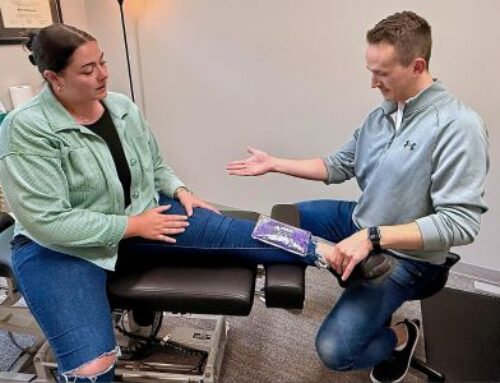I often discuss vitamin D with my patients, especially during our long northern winters. Your body needs this crucial nutrient year-round, but wintertime can present an added challenge with limited daylight.
Let’s discuss why this vitamin is so important, and how we can make sure we include it into our routine:
Why It Matters
Think of vitamin D as your body’s master hormone regulator. Research shows it influences over 2,000 genes in your body.
Research suggests maintaining healthy levels may:
- Support immune function
- Enhance mood during dark months
- Maintain bone strength
- Support muscle function
- Help regulate sleep patterns
Sunshine and Light Therapy
Your skin creates vitamin D when UVB rays hit specific cholesterol molecules. We can often increase our levels by getting natural sun exposure for 5-30 minutes between 10 am and 4 pm. However, northern winters present unique challenges.
Between October and March above 37 degrees latitude, the sun’s angle prevents UVB rays from reaching us effectively. Even on sunny days, you’re likely not producing enough.
Light therapy can help combat the winter blues and support your body’s natural rhythms. While traditional SAD lamps don’t produce vitamin D, they help regulate your circadian rhythm and mood.
If you’d like additional reading on supporting your body during the winter, read my blog post on that here.
Food Sources for Improved Health
Research shows certain foods naturally contain vitamin D:
- Wild-caught salmon (approximately 500-1,000 IU per serving)
- Mackerel and other fatty fish
- Pasture-raised egg yolks
- UV-exposed mushrooms
- Fortified dairy products and juices
Smart Supplementation
Most people need supplements during winter. Studies show that about 42% of Americans are vitamin D deficient.
I recommend working with your healthcare provider to check your exact levels through a blood test. Your optimal level may differ based on health conditions and you may need a different dosage.
When taking supplements, they should be third-party tested to ensure quality and efficacy. Shop the third-party tested supplements that I recommend to my patients on Fullscript.
Maximizing Absorption
Take your supplement with foods containing healthy fats. Scientific research shows this can increase absorption by up to 32%. You will notice that many whole food sources of vitamin D already contain healthy fats; nature is cool!
Include these fat-rich foods with your supplement:
- Avocados
- Extra virgin olive oil
- Wild-caught fish
- Full-fat yogurt
- Nuts and seeds
Important Safety Notes
While vitamin D is crucial, more isn’t always better. Regular testing helps ensure you’re getting the right amount.
Certain medications can interact with vitamin D. Always inform your healthcare provider about your supplementation routine.
Your Winter Wellness Strategy
Consider vitamin D part of your comprehensive winter health plan. Combine supplementation with regular exercise and a nutrient-rich diet.
Research suggests maintaining healthy levels may:
- Support immune function
- Enhance mood during dark months
- Maintain bone strength
- Support muscle function
- Help regulate sleep patterns
Taking Action
Talk to your provider about testing your vitamin D levels. Regular monitoring helps optimize your supplementation strategy.
Your winter health matters. Understanding and maintaining proper levels can significantly impact your overall wellbeing.





